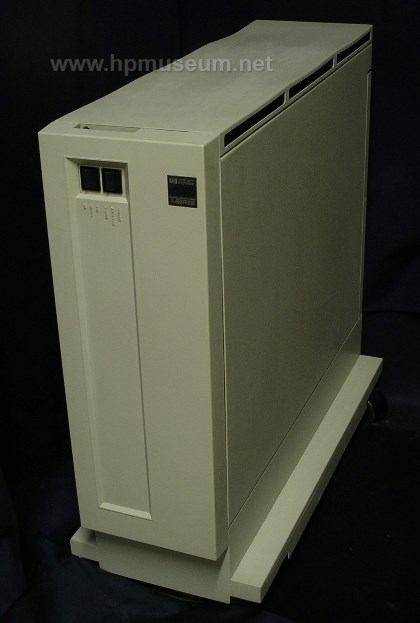Computer Systems - Accessories
 | 1000, L/A Series Selection: |
| 1) 12009A HP-IB Interface (1980) | |
| 2) 12006 Parallel Interface (1980) | |
| 3) 12005 Serial Interface (1980) | |
| 4) 12008A PROM Module (1980) | |
| 5) 12013A Battery Backup (1980) | |
| 6) 12010A Breadboard Interface (1980) | |
| 7) 12044A HDLC Direct Connect Interface (1980) | |
| 8) 12021A Flexible Disc Interface (1980) | |
| 9) GRAPHICS/1000-II DGL/AGP (1981) | |
| 10) 12012A Jumper Card (1981) | |
| 11) 12062A 4-Channel Analog Output Card (1981) | |
| 12) 92077A RTE-A Manuals 1980s (1982) | |
| 13) 12103C 512 KB Memory A-Series (1982) | |
| 14) 12103D 1 MB Memory for A-Series (1982) | |
| 15) 12102-60007 512 KB Memory Controller (1982) | |
| 16) A-Series Software (1982) | |
| 17) Contributed Software Library (1982) | |
| 18) 12063A Digital I/O Card (1982) | |
| 19) 12103B 256 KB RAM A700 (1982) | |
| 20) 12157A Battery Backup (1982) | |
| 21) 12158A Sine Wave Card (1982) | |
| 22) 12040D MUX Interface (1983) | |
| 23) 37222A Modem (1983) | |
| 24) 12154A Battery Backup (1983) | |
| 25) 12103K 2 MB Memory A-Series (1984) | |
| 26) 12220A 768KB RAM for A900 (1984) | |
| 27) 12221A 3 MB RAM A900 (1984) | |
| 28) 93695V 8-Channel MUX (1984) | |
| 29) 12065A Color Video Interface (1984) | |
| 30) 12022A Internal Disc Controller (1984) | |
| 31) 12060B 8-Channel High Level Analog Input card (1984) | |
| 32) 12061A 32 Channel Expansion Multiplexer card (1984) | |
| 33) 12025 I/O Extender (1986) | |
| 34) 12076A LAN/1000 Link 802.3 (1986) | |
| 35) NS/1000 Software (1986) | |
| 36) 4MB RAM for A-Series (1986) | |
| 37) 12016A SCSI Interface (1990) | |
| 38) 12221B 8 MB RAM A990 (1990) | |
| 39) 92077A RTE-A Manuals 1990s (1992) | |
HP introduced its low cost 1000 Series processor in 1979, the L-Series. Like the 21-MX computers, the L-Series was driven by the RTE operating system (RTE-L). The L-Series represented a significant departure in hardware design for HP 1000 computers. The L-Series was based on HP's new LSI CMOS/SOS (Silicon on Sapphire) processors. This processor had no Dynamic Mapping System (DMS). The CPU included an SOS processor as did each interface board. The processor residing on the interface boards gave those boards full access to computer memory, relieving the main CPU of IO control operations. This design provided the L-Series with much faster performance and throughput than the 21-MX computers. The interface boards for the L-Series were not backward compatible with the 21-MX or early 2000 computers. The museum has a collection of software available for download for these computers. Click here for the software listing. | |
| Back |
^ TOP©2004 - 2024 BGImages Australia - All Rights Reserved.
The HP Computer Museum and BGImages Australia are not affiliated with HP Inc. or with Hewlett Packard Enterprise. Hewlett Packard and the HP logo are trademarks of HP Inc and Hewlett Packard Enterprise. This website is intended solely for research and education purposes.
